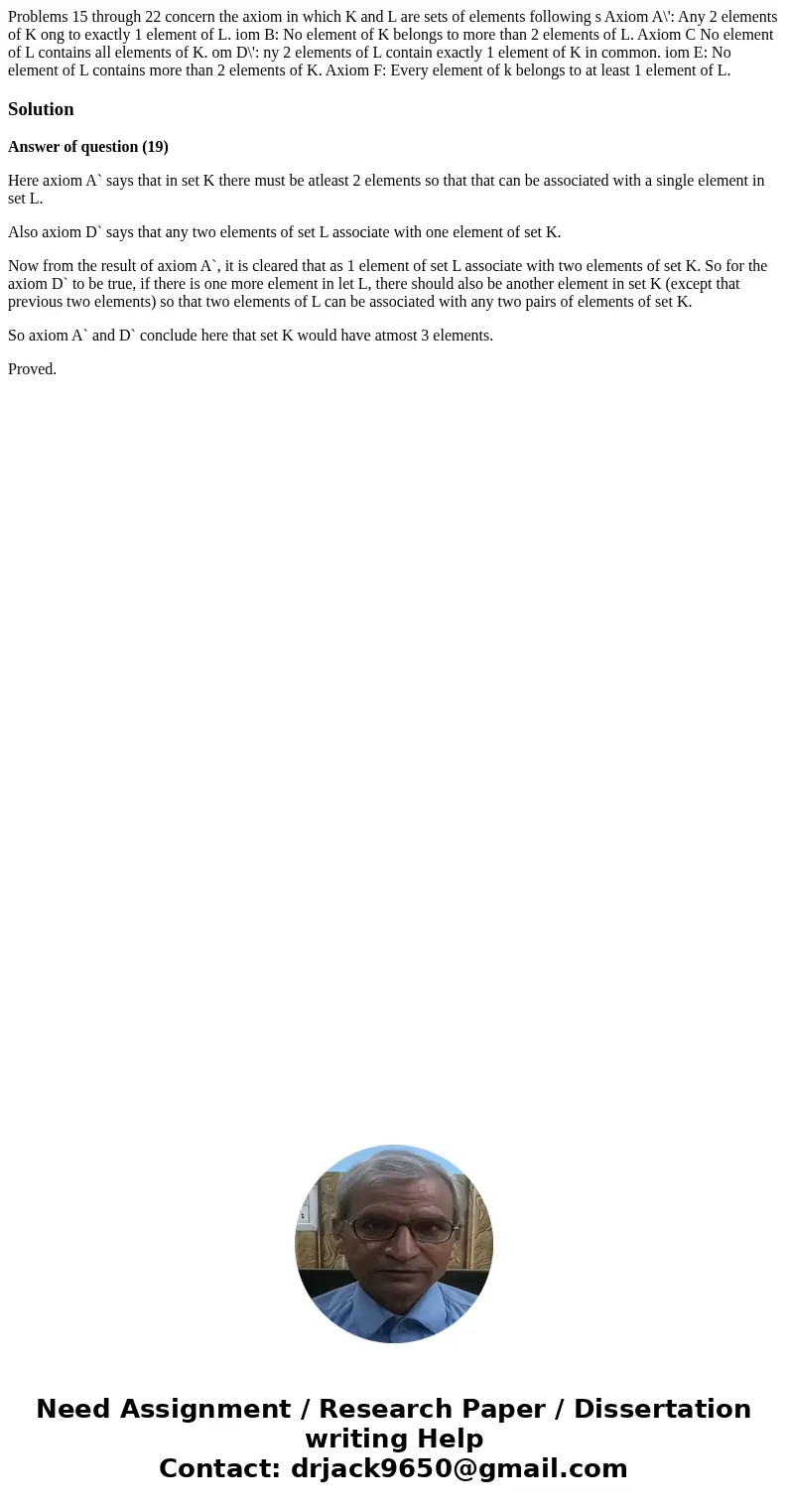Problems 15 through 22 concern the axiom in which K and L ar
Problems 15 through 22 concern the axiom in which K and L are sets of elements following s Axiom A\': Any 2 elements of K ong to exactly 1 element of L. iom B: No element of K belongs to more than 2 elements of L. Axiom C No element of L contains all elements of K. om D\': ny 2 elements of L contain exactly 1 element of K in common. iom E: No element of L contains more than 2 elements of K. Axiom F: Every element of k belongs to at least 1 element of L. 
Solution
Answer of question (19)
Here axiom A` says that in set K there must be atleast 2 elements so that that can be associated with a single element in set L.
Also axiom D` says that any two elements of set L associate with one element of set K.
Now from the result of axiom A`, it is cleared that as 1 element of set L associate with two elements of set K. So for the axiom D` to be true, if there is one more element in let L, there should also be another element in set K (except that previous two elements) so that two elements of L can be associated with any two pairs of elements of set K.
So axiom A` and D` conclude here that set K would have atmost 3 elements.
Proved.

 Homework Sourse
Homework Sourse